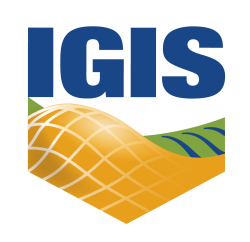I recently attended a really useful ANR training from the office of Program Planning and Evaluation (PPE) on needs assessment. Incorporating needs assessments into research and extension makes a lot of sense for many reasons. We all want to address issues and problems that are significant and pressing, and develop programs that are effective. A needs assessment can help flush out the challenges in our areas, prioritize needs, and build relationships with key stakeholders. As stewards of public resources, we also want our programs to be as efficient as possible. ANR expects all program staff to do needs assessments as part of program development, and the PPE has put together a great set of training and resources.
How GIS can be useful in a Needs Assessment
During the workshop, it was also exciting to hear how GIS can be a useful tool in many stages of a needs assessment. For example:
Sampling
A needs assessment often requires talking to people in the program area, which can be daunting because we work with a lot of people. GIS maps can sometimes provide a sampling frame, in other words a master list of all the potential people one might want to talk to. For example Margaret Lloyd, Small Farms Advisor for Sacramento and Yolo Counties, described how a Google Map of strawberry farm stalls in Sacramento County was the starting point for a needs assessment tour of strawberry growers. In other cases, you may get a spreadsheet of growers' addresses in a county. These can be turned to points on a map with GIS using a process called geocoding. This can be particularly helpful to an Advisor who is new to an area.
If there are more stakeholders than one can personally contact (often the case), taking a sub-sample may be a practical necessity. A simple random sample is easy to do, but a GIS also allows spatial sampling. This could be useful, for example, if you want to ensure an even geographic distribution across the county, or a distribution across other units, such as watersheds, municipalities, school districts, etc. Even if sampling is more opportunistic (e.g., meeting attendees), a map can show the distribution of the people you talked to, so you can tell if any areas were over or under represented.
Visualizing Results
Maps from a GIS can be an effective way to communicate the results of a needs assessment. Whether a simple map in a report, or an interactive web map, maps can show a lot of information at once by manipulating the size, shape, and color of symbols. Geographic patterns jump out in a way you don't get in a table or regression coefficients.
Data Fusion
With a little more work, the data you collect can be enriched with other useful datasets, such as census or environmental data. Imagine for example displaying the results of an email survey in a map form, overlaid for example with a map layer showing food security, or climate vulnerability. This type of fusion is helpful not only for understanding the nitty-gritty of the challenge, but also opportunities for extension and collaboration.
Building a Foundation for Innovation
Incorporating GIS in a needs assessment may be a little more work for those who aren't familiar with the technology (but see the services offered by IGIS below), however this investment can pave the way for all sorts of additional outreach and analysis. Putting your baseline data in a GIS simplifies ongoing monitoring and tracking, so you can see if your efforts are working. It also enables further technical analyses, such as testing spatially explicit models of a process, which can help you publish your work. On the non-technical side, getting your data into GIS formats dramatically simplifies the process of developing innovative communication tools down the road, such as story maps or web GIS.
IGIS Services
